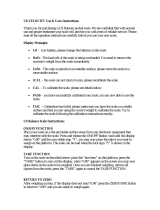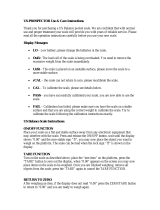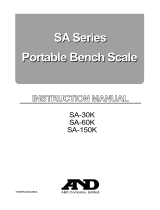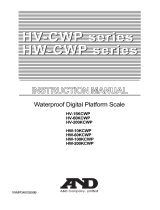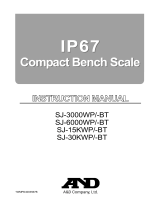
7
Cautions for installing the scale
Consider the following conditions to get the most out of your scale.
? Install the scale where the temperature and relative humidity is stable. There is no
draft and a stable power source is available.
? Install the scale on a solid and level surface.
? Do not install the scale in direct sunlight.
? Do not install the scale near heaters or air conditioners.
? Do not install the scale where there is flammable or corrosive gas present.
? Do not install the scale near equipment which produces magnetic fields.
? Do not install the scale where there is apt to be static electricity, in a place where
the relative humidity is lower than 45% RH. Plastic and isolators are apt to be
charged with static electricity.
? Do not use an unstable power source.
? When the scale is installed for the first time, or the scale has been moved, carry out
calibration as described in “8. CALIBRATION”.
4-3. Power source
For the power source, the AC adapter or C size dry cells can be used.
When using the AC adapter
Use a stable power source. To use the AC adapter, insert the AC adapter plug into the
AC adapter jack on the rear side of display pod.
? Confirm the AC adapter type is correct for your local voltage.
When using the batteries
Prepare 4 x C size (R14P/LR14) dry batteries. The batteries are not included in the
product. The scale can be used continuously for about 150 hours using the alkaline
batteries.
1. Turn of the scale and disconnect the AC adapter if used.
2. Slide the battery cover off
3. Push the battery case inside the display pod and take it out.
4. Insert four new dry cells into the battery case.
5. Push the battery case into the display pod as before.
6. Attach the battery cover.
? Take great care of the polarity of batteries. The polarity marks are
shown in the battery case.
? Replace used batteries with four new ones when “
lb0
” is displayed.
? Do not mix used and new batteries. It may cause damage to the
battery or product, if used.
? Do not mix the battery type. It may cause damage to the battery or
product.
? The battery life depends on the ambient temperature.
? Remove batteries from display pod when the scale is not to be used
for a long time. They may leak and cause damage.
? Damage due to battery leakage is not covered by the warranty.





















